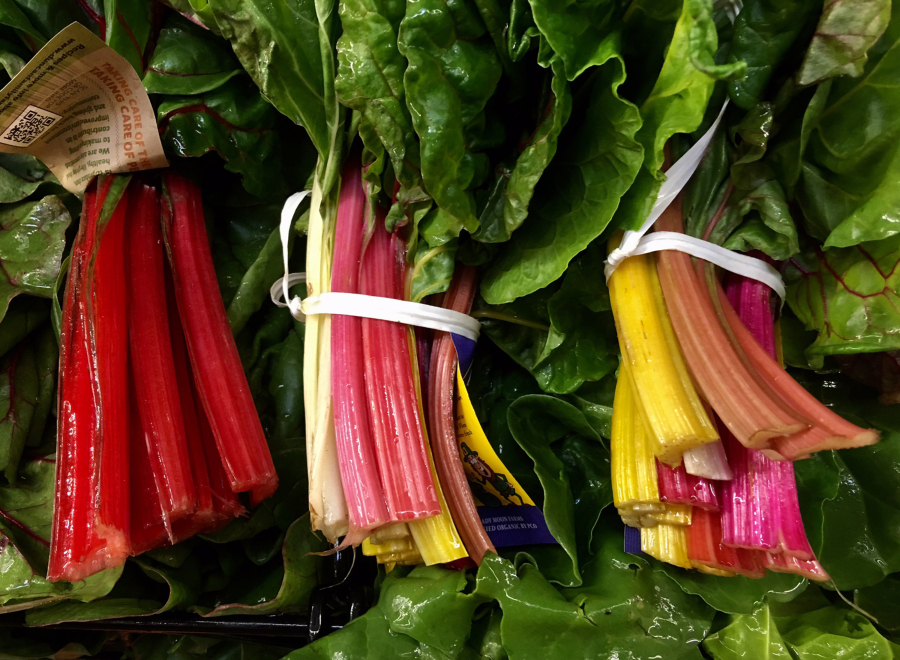It seems wherever I go I’m seeing Swiss chard. This showy cool season plant sometimes called a beet without a bottom is showing up in the landscape, in mixed containers and there it is available in the local grocery store. Is it an ornamental or an edible you might ask, and the answer is, both. Then you might wonder do you eat it fresh or do you cook it and again the answer would be both.
It has been almost 20 years since the All American Selections Bright Lights showed up on the scene. There was nothing to not love about this plant that had multicolored-stems that were so ornamental looking yet provided that glorious glossy foliage that became a substitute for fresh spinach. Swiss chard is known botanically as Beta vulgaris ssp. vulgaris showing it is indeed a leafy beet.
But holy cow, now you look at a catalog and you’ll see Bright Lights there but also single colors such as Oriole, El Dorado, Magenta Sunset, Ruby Red and the bi-colored Peppermint. They can also be found at your grocer. You will probably have 3 to 4 varieties to choose from for your culinary artistry in the kitchen.
Swiss chard is ready to harvest baby green within 30 days or a mature harvest in 60. Cut or break off the outer leaves when they are 12 to 18 inches tall. You may cut them when they are smaller and more tender. Like many plants, it seems production is lengthened by harvesting. The stalks can be cooked like asparagus. Cut the stems into 2- or 3-inch lengths and simmer in boiling salted water until tender. The leaves can be cooked or eaten fresh in tossed salads. Or you may simply want the texture and color in the landscape or designer styled container.



